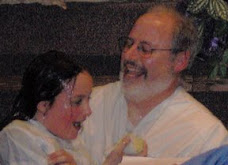A must goal for any church ministry
is to develop or maintain good congregational signing. It’s easy enough to kill
good congregational singing. Here are a top ten list of do’s and don’ts to
strengthen congregational singing.
- Appoint a competent song leader to formally conduct congregational singing. The leader’s gestures and beat pattern give guidance for singing. Subtle movements can indicate contrasts in volume and tempo. The melody and rhythm of unfamiliar songs can be visibly seen by the congregation. Starts and stops can be more precisely and more confidently followed. The congregation can see the song leader’s lips sync perfectly with the starts and stops of the music. Well trained organists think they can do all this, but there’s no substitute for the good song leader.
- Choose songs having a well-balanced ratio of familiar to new hymns. A good rule is not to sing more than one unfamiliar song in a service.
- Don’t wear out the same old songs. Singing a specific song once every two or three months is more than enough, especially when most churches already have an expansive hymnody known to most members.
- Sing songs that are written specifically for congregational singing. Songs written for a band may sound good on the radio, but may be very difficult to learn by those who don’t listen to Christian music on their radios.
- Old songs sung in new arrangements may bring freshness, variety, and interest to congregational singing. This would include key changes or transitions into a second musically related song, or interludes between verses. Creativity is usually a good thing.
- Key changes or other alterations to familiar hymns need to be visibly indicated by the song director. Don’t leave your congregational singers stick out by themselves when the instrumentalist shift gears unexpectedly. If you repeat something, or if singing is suspended during some transition, call attention to it visibly.
- The song service should reflect intelligent design. Don’t choose songs arbitrarily. The effective worship leader chooses the Sunday worship music to reinforce the worship theme and sermon for the service. Woven together, the music will tell something of a story. In addition to consideration of lyrics, songs should be arranged in an order that flows emotionally and musically. If two songs occur together, proper transitions should be considered so that a song with a joyful, celebrative atmosphere is not jammed into the next song which is altogether sober or even sad (imagine WHEN WE ALL GET TO HEAVEN paired with THE OLD RUGGED CROSS).
- New songs should be introduced in a compelling way. Song leaders should explain why a new song is worth learning. Perhaps the song can be introduced with a testimony of how the lyrics of the song were personally helpful in a time of crisis. If the origin of the song or something of its composer is known, divulging such information may make the song more meaningful.
- Once or twice a year, feature a hymn sing service, one that substitutes the sermon with song. Allow requests for a few favorite hymns to be made in part of the service. Churches that have a Sunday night service often feature the fifth Sunday evening song service.
- Hymn commentary notes can be included in the church bulletin.





